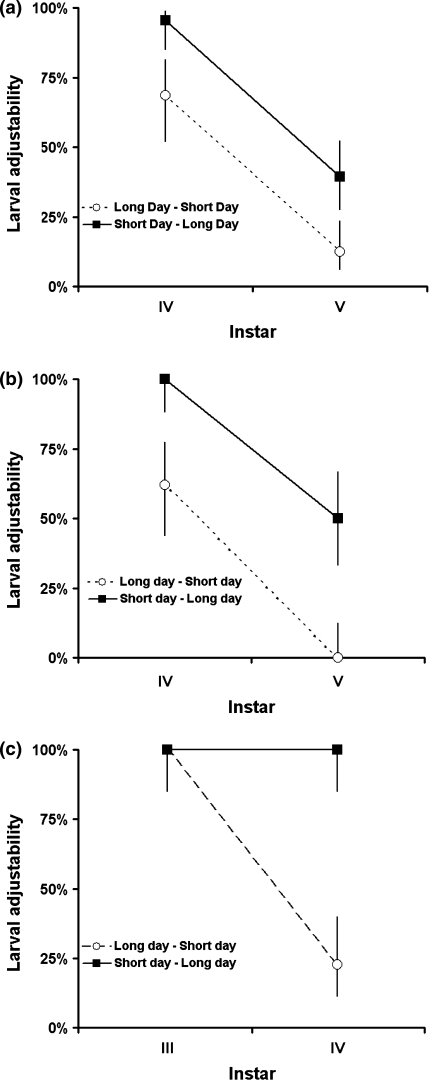Fig. 1.
Comparison of the asymmetric ability to change pathway to fit the new environment between larvae transferred from a diapause-inducing condition (short daylength) into an environment that triggers direct development (long daylength) (filled squares) and larvae transferred in the opposite direction (open circles) in a P. napi, b A. levana and c P. aegeria. Data shown are the proportions of larvae (± binomial 95% CI) that managed to adjust to the new environment when transferred between environments in the penultimate and ultimate larval instars

